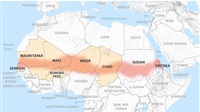German payments firm Wirecard says missing €1.9bn may not exist

Wirecard has said that €1.9bn (£1.7bn) in funds
missing from its bank accounts may not exist, as the accounting scandal at the
German payments company deepens.
The firm processes tens of billions of euros in
credit and debit transactions each year and is a former darling of Germany’s
tech sector. It had previously said it believed the money was held in escrow
accounts at two Asian banks.
The company’s longtime auditors EY were unable
to trace the money and the central bank of Philippines said none of the money
appeared to have entered the country’s financial system.
“The management board of Wirecard assesses on
the basis of further examination that there is a prevailing likelihood that the
bank trust account balances in the amount of €1.9bn do not exist,” Wirecard
said in a statement on Monday. The missing money accounts for about a quarter
of Wirecard’s total balance sheet.
The company’s share price halved in early
trading on Monday and has fallen by 75% since last Thursday, when EY said the
funds were missing. On Friday, Markus Braun, Wirecard’s longtime chief
executive, resigned from the company he had built into Europe’s most valuable
financial technology group.
Wirecard said on Monday it was withdrawing its
financial results for 2019 and the first quarter of 2020. “Potential effects on
the annual financial accounts of previous years cannot be excluded,” the
company said.
The company said it was continuing
“constructive discussions” with a consortium of banks over the extension of
€2bn in loans. The loans can be terminated after the company missed the
deadline for publishing its annual results last week.
“Wirecard is assessing options for a sustainable financing strategy for the company,” the management board said. “In addition, the company is examining a broad range of possible further measures to ensure the continuation of its business operations, including cost reductions as well as restructuring, disposal or termination of business units and products segments.”







